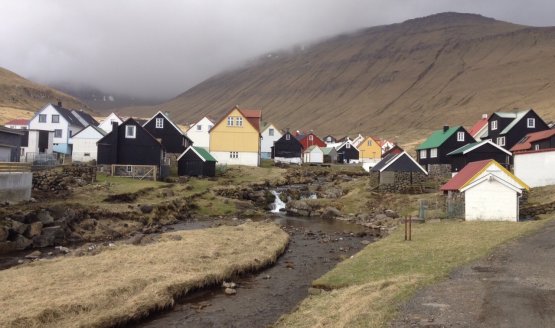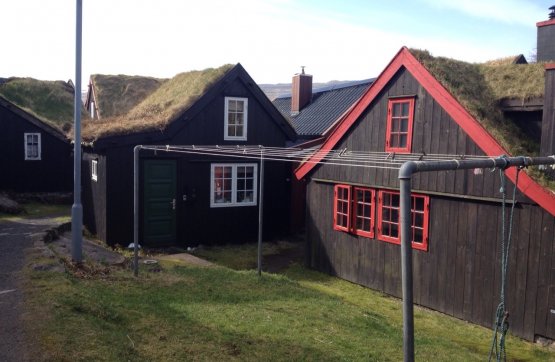God stop us from making any list. Yet it is best to make it immediately clear that only a few countries in the world unite all the unique characters of the Faroe Islands. It takes a total of 4 hours of flight (2 from Milan to Copenhagen plus 2 more to get to Vágar airport) to land on such a distant planet that, as soon as you touch ground, you feel like astronaut Armstrong, urging to place a flag right away – perhaps not the Danish one, since the relations between these two countries are a little unsettled, not riotous as these two people are extremely civilised.
Once the lunar excitement is over, you leave the tiny airstrips and find yourself hiking on the edge of the hill, a mix of grass and mud from the Sørvágsvatn, a lake that ends on the opposite side with a 35 metres high waterfall, on the edge of the ocean. Before the racket, the only sound comes from the oystercatchers nose-diving into the water to catch worms, small fish and yes, even the precious bivalves (18th century British naturalist Mark Catesby, who named them, would still find it hard to understand).

PICTORESQUE AND LONG LIVED. The colourful village of Gjógv, 25 inhabitants almost all of whom are over 67 (and in excellent shape, it appears)
Eighteen islands, almost all of which united by bridges or tunnels, forming a heaven brushed by the warm breeze of the Gulf of Mexico, interrupted without any warning by splashes of horizontal rain, due to the wind, blowing so strong it can move your inner organs. Unrepeatable scenes, as with prime minister
Kaj Leo Johannesen walking in sneakers and without any bodyguard in the streets of Torshavn’s port, the sleepy capital («Nice to meet you!», he greets us all). Or in the case of the parliament and the two ministry buildings created in the Ninth century by the Vikings in Tinganes, inside colourful wood houses with roofs of grass.
Another image: the 25 inhabitants (out of a total population of 49 thousands, with 77 different nationalities) who live in Giógv, a sleepy village clinging on the edge of a scenic laceration of the sea: they are almost all over 67 though they look younger than the author of this piece, who’s 25 years their junior. The 4 murders in over 25 years, an all time low, unless proved wrong (according to the UN, every year around half a million people are murdered in the world). The 3, not one more, traffic lights, all in Torshavn, the only source of stop and go for 49 thousand inhabitants who basically only travel by car (there’s only one bus line and it is free).

MINISTRIES WITH A CLOTHESHORSE. Two buildings, the location of two ministries, in Reyni, the ancient town of Tórshavn, Faroe’s capital
And again, the official language, Icelandic with very strong ancient Norwegian influences, spoken together with Danish, as the latter country still controls the foreign policy and the ministry of Defence in the Faroe Islands. The important social control imposed by the Lutherans and Baptists on a large portion of the population – something very rare, among Northern people, some of the most atheists and secularised in the world.
The entrance to the houses, never locked and in fact left wide open on Ólavsøka, the national holiday on July 29th: sport, songs and dances continue long after the day is over. The total absence of indigenous trees – the few to be found were imported from Alaska or Tierra del Fuego. And the absence of sheep cheese, very odd in a country whose name means “the islands of sheep”. And with this we finally open the important culinary report.
Enchanting Faroe/part 2: sheeps and whales